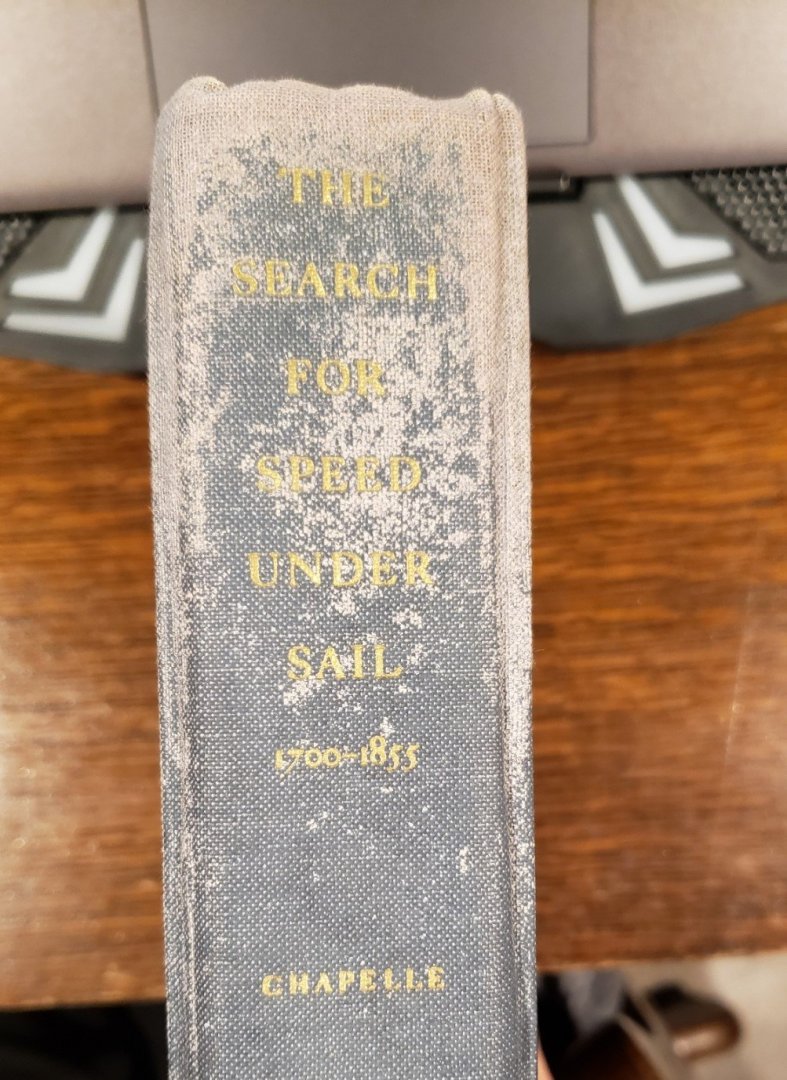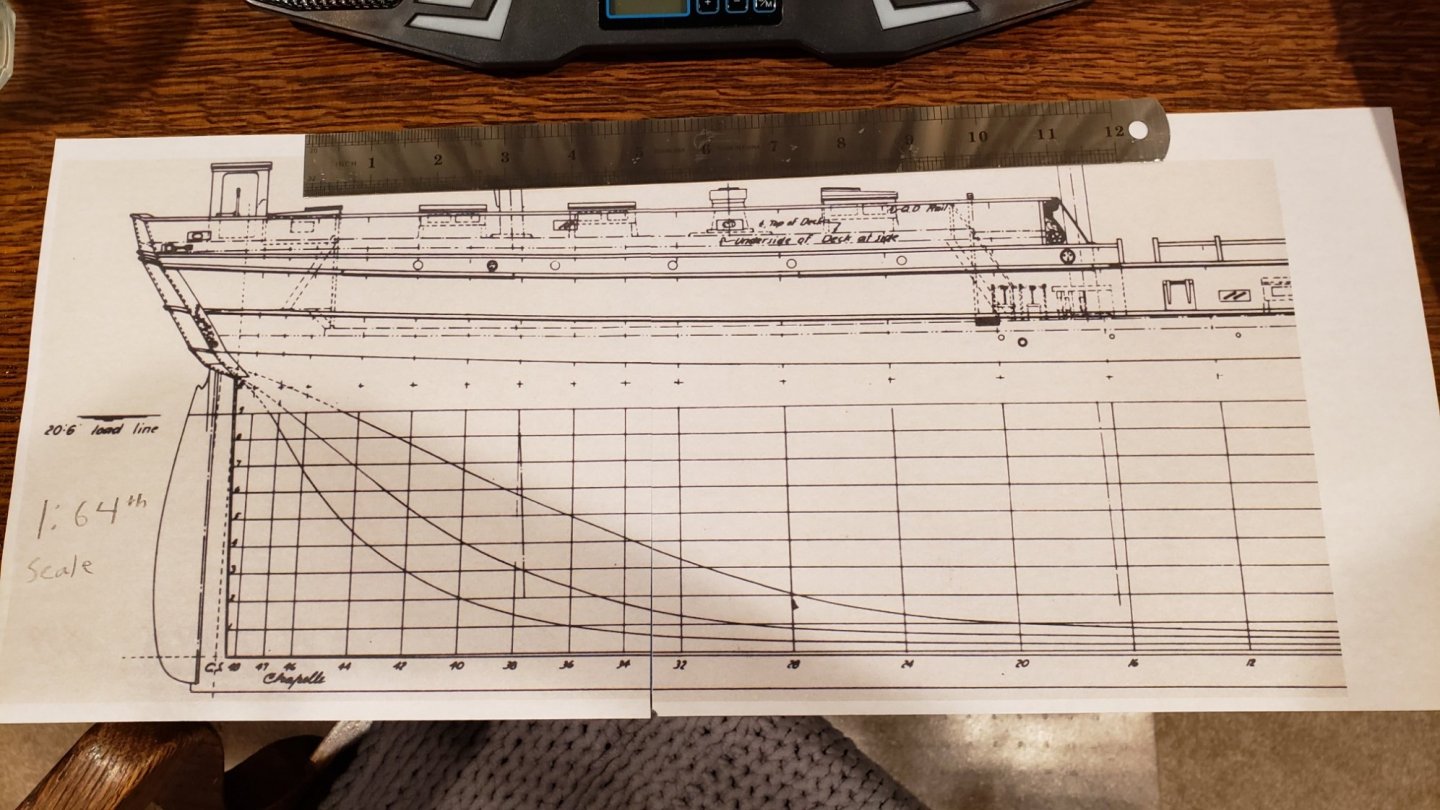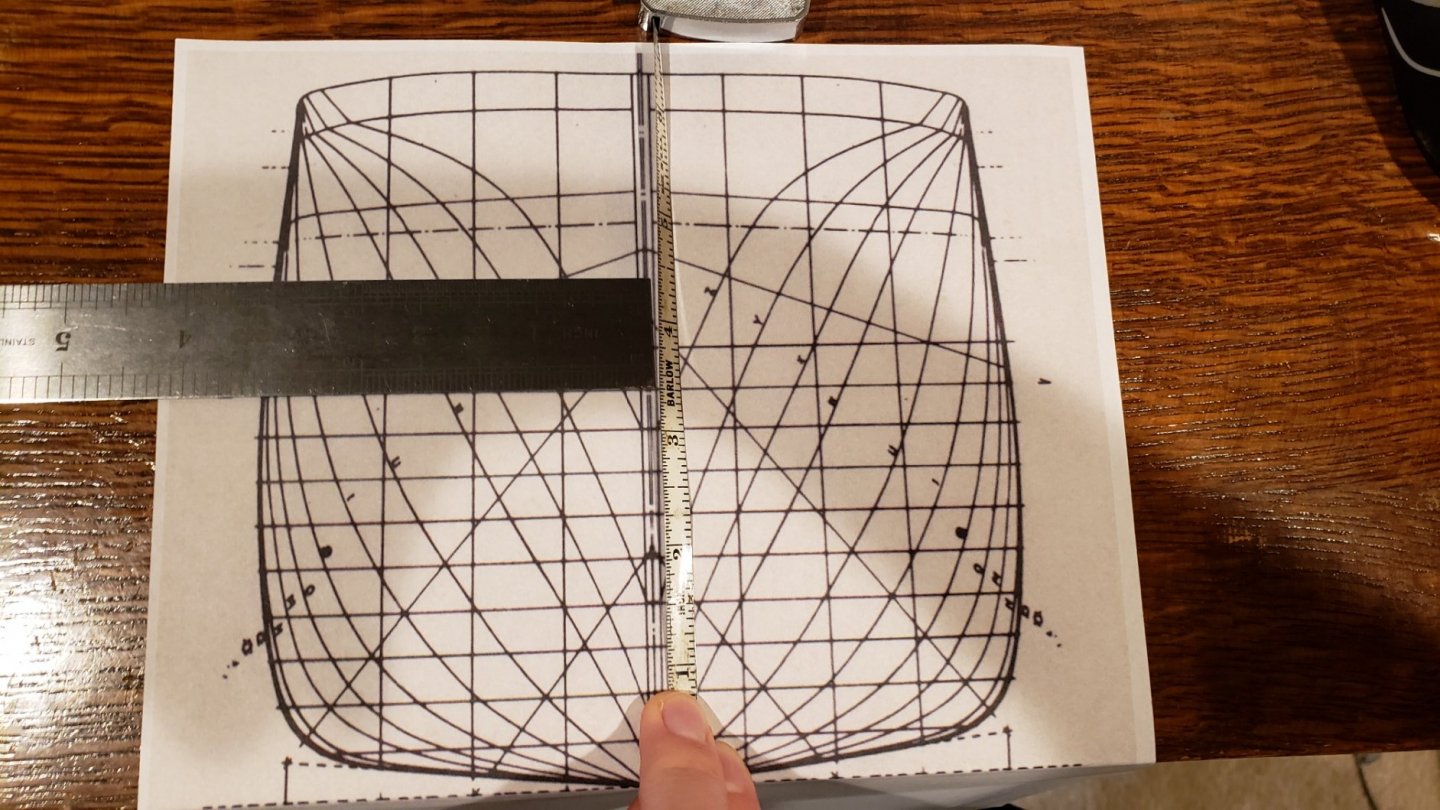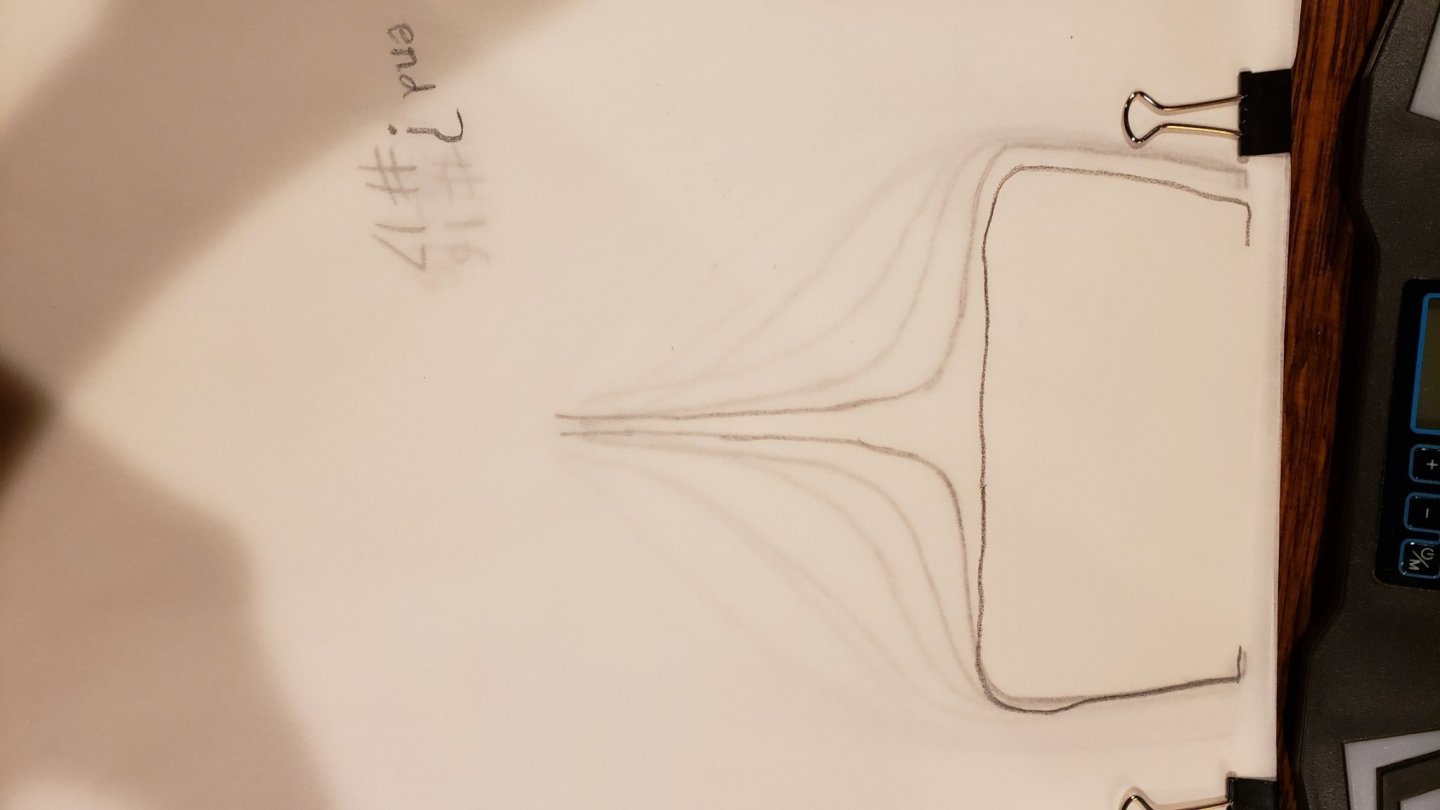Search the Community
Showing results for tags 'new york'.
-
The 74 gun New York was never finished. She remained on the stocks until her destruction in April 1861 along with 10 other ships at Gosport (now Norfolk) Harbor. Research seems to indicate that she was being razzeed in preparation for conversion to a Steam Frigate. This build will reflect as she might have been had she been completed and launched.
-
Hello, I am attempting a scratch build here. However I'm not sure how far I'll make it in the build, but it's been fun so far getting things together. Some members here have helped me get started with finding plans which lead me to getting "The search for speed under sail" by Howard I. Chapelle. Which has provided the plans I am starting this log with. It was difficult trying to get scans from the book until with reluctance I cut the plans pages out of the book. And afterward spent some time using gimp and freeCAD trying to trace lines and eventually just stuck with gimp, which I found easier. I don't really have any experience with using CAD specific software. Using the measuring tools in gimp I got the plans close to 1:64 in scale, and comparing the printed pages with a tape measure it seems they are close enough. And then I traced the hull lines using tracing paper which didn't turn out very good lol, but it might be close enough that some sanding and pre-cutting guess work can help.
- 10 replies
-
- Packet Ship
- William Webb
-
(and 1 more)
Tagged with:
-
Greetings everyone so been discussing with frolick possible details that one might extrapolate if attempting to build a model of subscription frigate USS New York 1800-1814. coming from New York myself this is a project that would definitely interest me in time. Most of these frigates are lacking in stem and stern details (possibly deck layout as well), so it seems like it's a matter of using ones imagination while working with various themes that would have accompanied the ships via the ports they came from. Got me thinking a lot about what we do know via surviving plans of such similar ships (Essex?, Chesapeake, etc) I am reposting here what we started via message and feel free to offer any thoughts on this process and lets have fun. As per uss frolick: The Frigate New York's figurehead: Nothing is known. However, all three other 36 gun frigates had either the Allegorical figure "Columbia", or a roped female figure representing "The Genius of America" - the same thing. I am willing to bet that the New York also had the figure of Columbia on her stem - especially since the city has a great university of the same name! Even the USF United States had something very similar. A drawing of Chesapeake's "Columbia" has turned up on the first page of one of her captured logbooks. A similar figurehead appears on Chapelle's redrawing of the 36-gun class, which he said "was not used", but he doesn't say why. Another drawing of a Columbia figurehead survives in the Willia, Rush papers, but it is not identified as belonging to any specific ship. Next, the New York's stern carvings. Nothing at all is known. But it probably was a play on the Seal of New York, which was essentially the same then as it is today. From Manhattanunlocked.blogspot.com. "John Buckley Pine's, Seal and Flag of the City of New York, 1665-1915: First the basics. Let's break down the current, official seal. The seal is wrapped in a laurel wreath.Most often used as a symbol of victory (to "rest on one's laurels" is to milk past achievements), it's the bay leaf. A more familiar symbolic image may be this... An eagle, facing and rising towards asailor, surmounts a hemisphere at the top. A ribbon inscribed with the Latin words, SIGILLUM CIVITATIS NOVI EBORACI, simply translates as "Seal of the City of New York." The two figures on the seal, a sailor and a Native American, are almost always identified as having the names Dexter and Sinister. But there is a designated name for every position on a seal (for example, the eagle occupies a position called the "crest"), and “the dexter” and “the sinister” are seal positions: they are Latin for "right" and "left." On the official seal, the figureshold up the shield (they should never be leaning on it), and the sailor is the "dexter support," while the Native American the "sinister support." The sailor holds a plummet in his right hand, the Native American holds abow in his left. Some accounts say the sailor is holding a plumb, a carpenter's tool, but it's actually a lead-lined plummet used for measuring water depths. And just because visuals are fun, Both figures stand on a laurel branch. On the rare occasion that the seal gets any press coverage at all, it's usually because of the date at the bottom, which since 1977 has been 1625, a date most agree is meaningless. Over its history, though, the seal has displayed different years depending on whatever hallmark event was fashionable to recognize at the time. Now for the really interesting history. At the center, a shield is emblazoned with two beaver and two flour barrels in the spaces between the arms of a windmill. The beaver (their pelts for fur and skin for hats) is most famously associated with New York's economic beginnings under the Dutch. To give you an idea of just how central beaver were in the early economy, the Netherlands-bound ship, the Arms of Amsterdam, delivered the Schagan letter bearing the news of Peter Minuit's purchase of the island in 1626, which also enumerated this cargo: 7,246 Beaver skins 178 1/2 Otter skins 675 Otter skins 48 Mink skins 36 Lynx skins 33 Minx 34 Muskrat skin Beaver were, by far, the main commodity of New Netherland and could actually be used as currency. But according to the indispensable Gotham, by Edwin G. Burrows and Mike Wallace, the beaver trade fell off 80% just 25 years later, by the mid-1650s. The English took over in 1664 and a decade later a "new beaver," so to speak, was found--and just for Manhattan--in the actions of Governor Andros who ordained that all imports be processed through the port of New York. As well, all exports had to be packed, loaded and shipped from New York. With Andros' decree, every community from Albany to Amboy to Hempstead had to send their cattle, pigs, and harvest to New York for export. Flour, though, was the “new beaver.” "Bolting" flour was the arduous multi-stage process of separating wheat into flour and bran. Apparently New Yorkers were quite adept at it since one of Andros' main arguments for the law was that it was needed to ensure a consistent and high quality product. With bolting, barrel-making became a booming island industry. Had the decree not come about it’s hard to say how much New York's run up to power would have been affected later on. The Erie Canal stood on the shoulders of previous booms, just as the flour boom stood on the shoulders of the beaver trade. Its benefits to Manhattan were nothing short of mind boggling. Stokes Iconography sums it up from a written complaint lodged by a New Yorker lamenting the 1694 repeal of the pro-Manhattan law. (The "Bolting Act," a term often attributed to the law itself, was actually appears to have been the repeal of the law that would release the outlying areas from Manhattan's firm economic grip.) It may be ironic that the author of these words was formulating a complaint, but that's classic New York... When the city enjoyed the bolting monopoly several advantages accrued to this city and province. In 1678, when the bolting began, there were only 343 houses in New York. By 1696, 594 new buildings had been added. This increase is to be attributed to the bolting. The revenue in the years 1678, '79, and '80 did not exceed £2,000; but after that it increased annually until it amounted in 1687 to £5,000.... In 1678, there were three ships, eight sloops and seven boats belonging to this port; in 1694, there were 60 ships, 62 sloops, and 40 boats.... In 1678, not over 400 [beaver] were killed; in 1694, nearly 4,000. Lands were low-priced during those years; since then they have advanced to ten times their value. Of the 983 houses in New York, 600 depend upon bolting. In 16 years the port went from owning 18 seaworthy vessels to 142, mostly due to sifting flour. Andros' laws did for Manhattan what the Erie Canal would do 125 years later: triple the economy in a few years and put Manhattan in the enviable position of middleman. So the flour barrel got its place on the seal. The windmill's connection to the Dutch is not necessarily a given; when it first appears on the seal we were under English rule, and windmills were popular there, too. But the 1686 seal, when it first appears, was the first seal created by New Yorkers themselves. And since there were many Dutch in positions of authority, and many of them had windmills on their coats-of-arms, it probably does symbolize Dutch heritage. But the best argument can be found in the position of the windmill's arms, they mimic the saltire, or St. Andrew's Cross, and three saltires arranged vertically was the official Dutch emblem. "
- 51 replies
-
- frigate
- subscription
-
(and 1 more)
Tagged with:
About us
Modelshipworld - Advancing Ship Modeling through Research
SSL Secured
Your security is important for us so this Website is SSL-Secured
NRG Mailing Address
Nautical Research Guild
237 South Lincoln Street
Westmont IL, 60559-1917
Model Ship World ® and the MSW logo are Registered Trademarks, and belong to the Nautical Research Guild (United States Patent and Trademark Office: No. 6,929,264 & No. 6,929,274, registered Dec. 20, 2022)
Helpful Links
About the NRG
If you enjoy building ship models that are historically accurate as well as beautiful, then The Nautical Research Guild (NRG) is just right for you.
The Guild is a non-profit educational organization whose mission is to “Advance Ship Modeling Through Research”. We provide support to our members in their efforts to raise the quality of their model ships.
The Nautical Research Guild has published our world-renowned quarterly magazine, The Nautical Research Journal, since 1955. The pages of the Journal are full of articles by accomplished ship modelers who show you how they create those exquisite details on their models, and by maritime historians who show you the correct details to build. The Journal is available in both print and digital editions. Go to the NRG web site (www.thenrg.org) to download a complimentary digital copy of the Journal. The NRG also publishes plan sets, books and compilations of back issues of the Journal and the former Ships in Scale and Model Ship Builder magazines.








